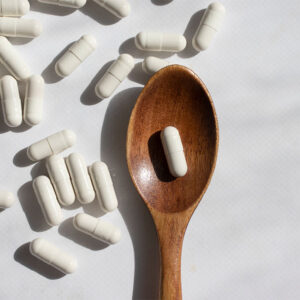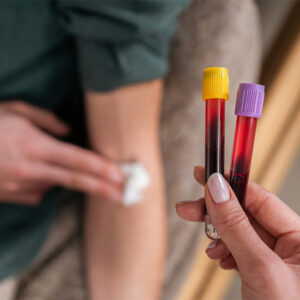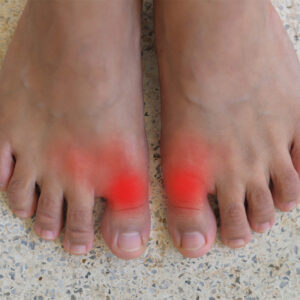
Parkinson’s Disease Secret DISCOVERED in Scotland?
If you come from a Scottish family, you should be proud.
The Scots were some of the strongest warriors of the ancient world, fighting off invading Vikings and Romans to protect their land.
And new research has discovered that one of their beloved plants could fight Parkinson’s disease just as fiercely.
Researchers have found that this Scottish plant can help heal Parkinson’s disease symptoms…
Starting with your memory.
If you’re Scottish, you probably know all about the thistle. It’s found in many Scottish family crests and is the official flower of Scotland.
But I’ll bet that you didn’t know it’s also a promising treatment for Parkinson’s disease!
Milk thistle is an herb that has been used for hundreds of years – mostly for liver conditions. And now new evidence shows that silibinin, a compound found in thistle, could protect your brain.
In a new animal study, researchers divided mice into two groups: one was fed a silibinin compound and the other was given memantine, an Alzheimer’s drug that’s also prescribed to Parkinson’s patients.
They found that the silibinin group had less nerve damage in the hippocampus, a region of the brain especially important for cognitive function.
Silibinin also prevented mitochondrial dysfunction (when your cells produce less energy) and even reduced oxidative stress in the brain.
The researchers also noticed silibinin was able to reduce toxic alpha-synuclein clumps, mitochondrial transit impairments, and oxidative stress, all markers of Parkinson’s disease.
In other words, silibinin reduced the damage from Parkinson’s disease while strengthening cognitive function.
Taken together, the research team concluded that silibinin would benefit people with Parkinson’s but would also be helpful for dementia, including Alzheimer’s.
If you are looking for this protection, try a milk thistle supplement. Milk thistle has also been shown to help lower blood sugar, so you can maintain healthy blood sugar while also protecting your brain. You can take up to 600mg daily safely.
P.S. Want to take even better control of your Parkinson’s disease? Try my 5-step program to lower inflammation. You can find it right here.
Written By Dr. Scott Olson, ND
Nearly 25 years ago, failed mainstream medical treatments left Dr. Olson in constant pain – and his health in ruins. And that’s when he did something REVOLUTIONARY. He began his career in medicine – and dedicated his life to uncovering the true, underlying causes of disease.
Through his innovative medical practices in Tennessee and Colorado, Dr. Olson has helped cure countless seniors from across America of arthritis… heart disease… diabetes… and even cancer. All without risky prescription drugs or painful surgeries.
View More Free Articles
Is There Really a Hidden Benefit to BROCCOLI?
Just when we thought broccoli’s resume couldn’t get any more impressive, new research proves us wrong. The phytonutrients in this tasty veggie can lower inflammation… balance blood sugar… and even boost your memory. And you likely already know of broccoli’s legendary prowess in preventing cancer. Now, a new study reveals that sulforaphane, the potent compound...
Belly Trick BOOSTS Brain Function
Boy do I love a cheap and easy solution. And if you can’t resist a good bargain either, keep reading. Because I have a brain-boosting one to share that fits the bill. If you’re like most folks, you intend to stay as sharp as a tack well into your golden years. So, you’re always on...
The Hidden Heart Danger LURKING in Your Gut?
Dear Living Well Daily Reader, Living with inflammatory bowel disease (IBD) is no walk in the park. The cramping, the urgency, the endless trips to the bathroom—it’s a daily struggle that can leave you exhausted and frustrated. And here’s the kicker: sometimes, IBD’s vague symptoms can lead to misdiagnosis or even NO diagnosis at all....
Has the Key to Unlocking Better MS Treatments Been Found?
Dear Living Well Daily Reader, Imagine waking up one morning and feeling a strange tingling in your fingers. You brush it off, thinking it’s just a pinched nerve. But then, your vision starts to blur, and your balance is thrown off. Suddenly, you’re faced with a terrifying reality: you have multiple sclerosis (MS). For the...
6 Secret Ways to Spot HIDDEN Processed Foods
“Avoid eating processed foods,”—If I’ve said it once, I’ve said it a thousand times. The reason why is simple. These Frankenfoods are designed to satisfy your taste buds. But they leave your body full of foreign chemicals that can cause harm and in need of more nutrients. But a patient asked me the other day,...
8 Red Flags There’s a Heart Attack in YOUR Future
Humor me and count to 40. Done? According to the Centers for Disease Control and Prevention (CDC), someone in the United States just had a heart attack. That adds up to around 805,000 people a year. Many of those were a “silent” heart attack, with the victim having no clue it even happened—and they go...
Mailbag! Neuropathy Pain? Ease Tingling in Hands and Feet
“I’m diabetic and have burning, tingling pain in my feet. My doctor says it is peripheral neuropathy, and there aren’t any cures. But do you have any tips to help me deal with it?” —Hank Hi Hank, Uncontrolled blood sugar can trigger nerve pain called peripheral neuropathy. This condition causes pain and numbness, usually in...
5 Often Overlooked Diabetes Red Flags
Some of the worst diseases we face are also the stealthiest. They silently sneak up with few signs that they’re harming us from the inside. Well, that is until it’s too late, and they’re well-established. Osteoporosis and hypertension are on that list. And so is type 2 diabetes. In fact, scientists estimate that around 25...
ALERT: CGMs Can Give Inaccurate Glucose Readings
Keeping your blood sugar in check is critical for a longer, healthier life. It used to be if you wanted to watch your blood sugar for hours at a time, you’d have to go to a lab and be hooked up to an expensive, complicated machine. But now, anyone can get a continuous glucose monitor...
“Eat the Rainbow” Trick Drives Down Cancer Risk
If I were to ask you, “What’s the color of good health?” what would you say? Maybe it’s green or blue, the “colors of nature.” Or rosy pink cheeks may come to mind. Well, it turns out the “colors of the rainbow” might be the best answer. Research suggests the key to a long, healthy...









